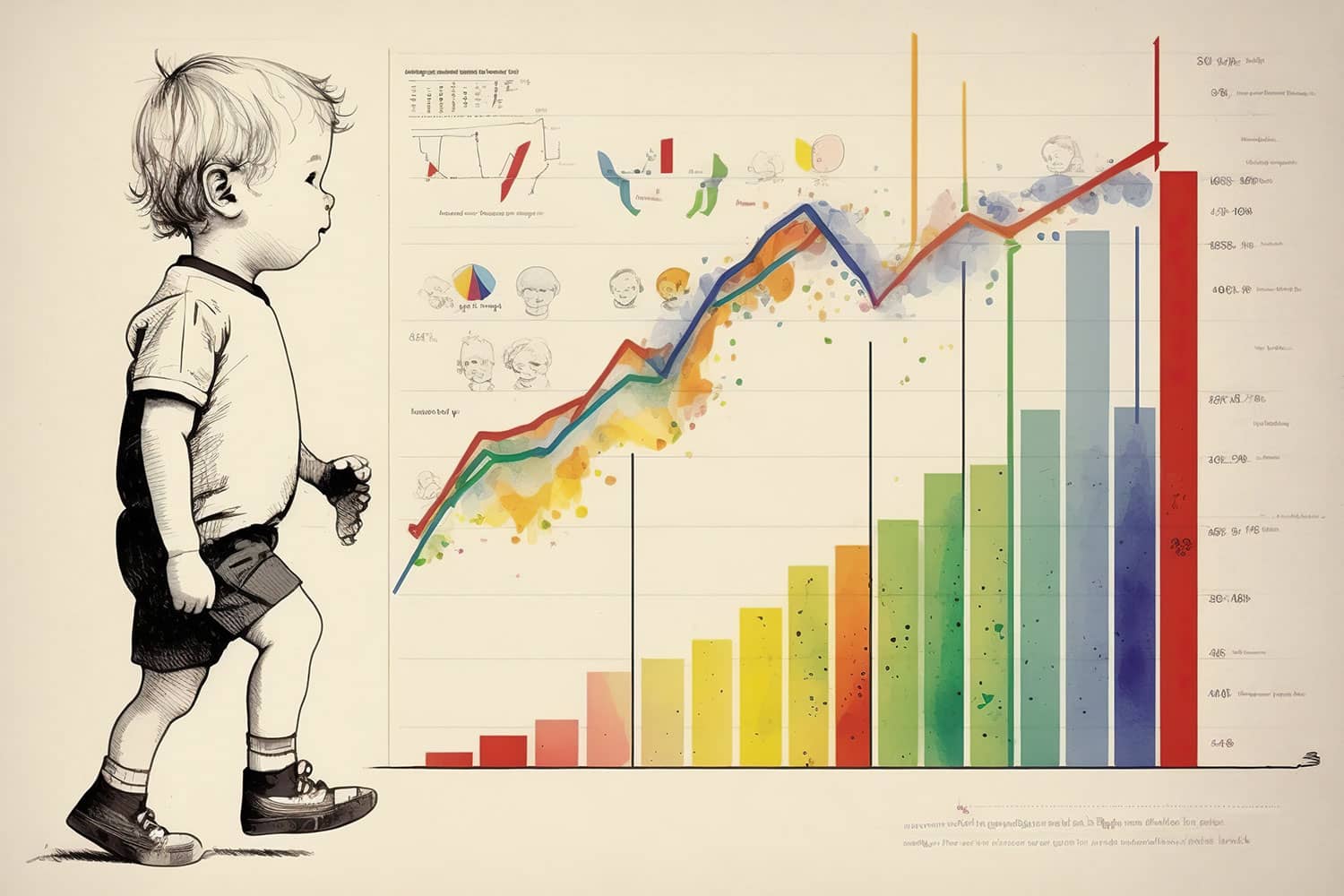Generativity vs Stagnation
You may have heard the term ‘generativity’ and wondered what it means. It’s a concept developed by Erik Erikson, a psychologist who studied the development of humans over their lifespan. Generativity is about creating something meaningful that leaves behind a positive legacy. On the other hand, stagnation is when you feel stuck in life and unable to make progress or find purpose. In this article, we’ll explore how these two concepts can impact our lives and what strategies we can use to achieve generativity and overcome stagnation.
Understanding Erikson’s Theory of Psychosocial Development
You can understand Erikson’s Theory of Psychosocial Development and how it affects your life by looking at the various stages you go through from infancy to adulthood. This theory was developed by Erik Erikson, a famous psychoanalyst. It is based on the premise that our lives are divided into eight distinct stages, each with a psychosocial crisis that must be resolved for a successful transition to the next stage in life. At each stage, there is an opportunity for personal growth or stagnation.
The first stage of development is focused on developing a sense of trust in ourselves and others. During this time, infants learn to rely on their caregivers and develop basic physical skills such as walking and talking. For individuals to move onto the next stage of development, they need to have successfully navigated this initial psychosocial crisis.
Next comes autonomy versus shame and doubt, where children learn how to control their behavior and become independent from their parents or guardians. By doing so, children gain self-confidence and become more aware of themselves as individuals capable of making decisions independently from those around them. The third stage involves initiative versus guilt, followed by industry versus inferiority, where children focus on school work and other activities related to learning new skills or exploring interests outside the home environment.
As we reach adolescence, we face the fifth challenge, which focuses on identity formation versus role confusion or what Erikson termed “ego identity” – finding out who we truly are as individuals rather than just accepting roles given to us by society or family expectations. During this time, adolescents engage in self-reflection in order to explore different aspects of themselves – including values, beliefs, and goals – while simultaneously navigating relationships with peers and adults alike in order to arrive at a healthy understanding of oneself within social contexts.
Finally, it is during young adulthood that one’s ego identity can fully form if all previous challenges were successfully addressed via reflection upon past experiences combined with new ones encountered along the way; these culminate into mature adult personalities capable of generativity (creating something lasting) instead of stagnation (remaining stuck). Understanding Erikson’s Theory allows us to recognize potential pitfalls along our journey toward maturity while also affirming our capacity for personal growth every step of the way!
The Implications of Generativity vs. Stagnation on Our Lives
Living in a state of generativity or stagnation has far-reaching implications for our lives, and it’s something we can’t ignore. Generativity is the psychological growth that comes from being able to constructively direct our energy towards creating things that will outlive us – such as our children, artworks, businesses, etc. On the other hand, stagnation is when we feel stuck in an endless cycle of achieving nothing. It represents a lack of self-regulation and resilience building necessary for progress in life.
Generativity allows us to cultivate an attitude of gratitude and contentment with what we have achieved so far while inspiring us to create new possibilities for ourselves. It also encourages us to focus on developing creative solutions to life’s challenges. When living in a state of generativity, we can appreciate the present moment rather than obsess over past failures or worry about future uncertainties.
Stagnation, however, stifles creativity by trapping us into repetitive thought patterns and making it hard for us to take action toward achieving our goals. This can lead to feelings of hopelessness and helplessness, often leading people to depression and anxiety disorders. Additionally, this inability to make changes can affect relationships both personally and professionally, as stagnant individuals may be seen as unreliable or unmotivated by those around them.
By choosing generativity over stagnation, we open ourselves up to opportunities for personal growth while positively influencing those around us through our example. We become better equipped with the tools required for success and happiness, learning how to live authentically without fear or worry about what others think or say about us. In short – taking charge of ourselves gives rise to hope that anything is possible!
Strategies for Achieving Generativity
You may have heard of generativity versus stagnation in psychology. Generativity is the idea that we can grow and contribute to society. In contrast, stagnation refers to feeling stuck or not contributing anything meaningful. Examples of generativity include developing a career, volunteering, or creating something new; conversely, stagnation could be becoming preoccupied with trivial pursuits or staying stagnant in an unhealthy relationship. To achieve generativity, there are many strategies that you can employ.
Examples of Stagnation
Examining the psychology of stagnation can help you recognize patterns in your behavior that may hinder your growth. Stagnation is often seen as a personality dynamic where an individual fails to challenge themselves and instead opts for the same routines and beliefs they’ve always known. This can lead to cognitive dissonance, as one’s ideas no longer match up with reality. To break out of this cycle, practicing self-reflection and questioning our current beliefs or habits is important. Taking risks and exploring new possibilities can lead to personal growth and greater generativity. It requires an openness to change, but it also allows us to develop ourselves and discover something new about ourselves in the process.
Examples of Generativity
Discovering new possibilities and taking risks can help us to explore our potential, leading to a more meaningful life. Generativity in psychology is about understanding how we can achieve self-actualization and psychological growth through the different stages of development. When we are generative, we look for new ways to grow and develop as individuals to lead an even more fulfilling life. We take chances and try out different ideas to discover what works best for us. Generativity also encourages us to think differently about our lives, challenging traditional expectations while creating something that reflects our own values and beliefs. By doing this, we open ourselves up to a world of opportunities, enabling us to make meaningful contributions to our communities and beyond.
Overcoming Stagnation and Renewing Ambition
With a renewed ambition, you can break through the barriers of stagnation and embark on an exciting journey. It’s never too late to reignite your passions and discover new sources of inspiration that will propel you forward. To successfully overcome stagnation, embracing creative exploration and psychosocial growth is important. This involves taking time for self-reflection to identify the things that make life meaningful and fulfilling and understand what stands in the way of achieving those goals.
By being honest with yourself, you can take the necessary steps toward overcoming any obstacles that may be holding you back from reaching your ambitions. Making small changes in your daily habits can profoundly impact how you approach life, such as dedicating more time to pursuing hobbies or engaging in meaningful conversations with others. Developing healthier relationships with yourself and others is also key to staying motivated and inspired when it comes to breaking through stagnation.
Once you’ve identified these roadblocks, it’s time to take actionable steps toward tackling them head-on. Start by setting realistic expectations for yourself and breaking down larger goals into smaller achievable tasks. Having these mini accomplishments along the way will give you a greater sense of satisfaction and accomplishment while providing momentum during times when motivation is waning. Additionally, surrounding yourself with positive influences who believe in your vision are great resource for moral support and encouragement during challenging times.
Lastly, remember to recognize all the progress that has been made along this journey! Taking moments throughout each day to appreciate how far we’ve come can foster greater resilience when faced with unexpected setbacks or failures – allowing us to remain steadfastly committed to our ambitions even when times get tough!
3 Key Takeaways about Generativity vs Stagnation
- Generativity is a state of psychological development characterized by a desire to contribute something meaningful to society, while stagnation is a state of psychological development characterized by a lack of interest in social and psychological growth.
- Generativity is associated with feelings of satisfaction, purpose, and meaning in life, while stagnation can lead to feelings of apathy, emptiness, and boredom.
- Generativity can be fostered through meaningful relationships, creative activities, and taking on new challenges. On the other hand, stagnation can be avoided by seeking out new experiences, engaging in meaningful dialogue, and challenging oneself to grow.
Final thoughts About Generativity vs Stagnation
You can choose whether to stay stuck in stagnation or move forward into generativity. Generativity is the ultimate goal, and it’s within your reach if you’re willing to put in the effort. It takes courage and determination, but you can do it! Take a moment to reflect on what’s most important to you and how you want to make a difference in the world. Find something that excites and motivates you, then take action! Keep pushing yourself out of your comfort zone. Eventually, you’ll find yourself living a life filled with generativity- one that will leave an impact for generations to come.
Adam is a former Fortune 500 senior executive. He is a father, husband, student of life, and “self-awareness” transformational coaching leader.
Talk to Adam for FREE
SCHEDULE A NO OBLIGATION ONE-ON-ONE SESSION
Tell me about where you are in life, and I’ll suggest some tools to help you find new insights. It’s my purpose to serve others, so even if this meeting is our only interaction in life, I get the pleasure of meeting you and living my highest purpose.






